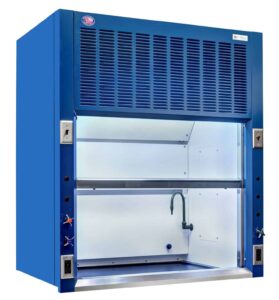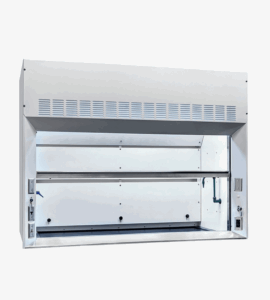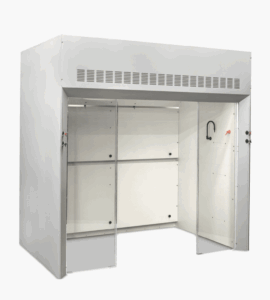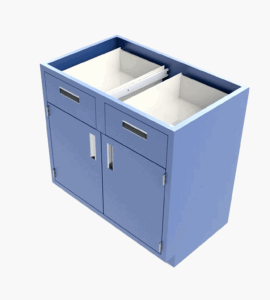Understanding Your Hood
Fume hood safety and providing guidance on how to properly operate laboratory hoods are a daily conversation for us with our customers. Like most things you purchase, they come with an operators manual. Typically this manual gets haphazardly flipped through, then quickly tossed into a drawer, trash can, or dark corner and is never heard from again. We get it, very few people want to read the do’s and don’ts for a fume hood.
Often those operating the hoods have been doing it for decades and are old pro’s. However, it’s important to understand that procedures can vary slightly from one manufacturer to the next, and believe it or not, fume hoods are becoming more technologically advanced. Specialty controllers and monitors are commonplace, and hoods with built in AI and robotics will be standard in the not-so-distant future. They aren’t always simple boxes that move air.
Start With The Sash
Most of the safety precautions revolve around the fume hood sash and it’s proper positioning when the hood is being used. Proper sash placement is critical even when the hood is not in use. Keeping the sash closed not only keeps hazardous or flammable materials isolated within the hood, it also saves on the electricity bill, as less air is exhausted from the building when it is down.
The fume hood sash also acts as a protective barrier standing in the way of dangerous chemicals and most importantly, your face. Make sure you only raise the sash when you need to, and immediately lower it when you are finished working within the hood. It should go without saying, but never put your head or body inside of a hood and make sure you are wearing eye protection at all times.
Sash stops are also a important fail-safe to keep the sash from opening too far, but not every hood is equipped with them.
Keep Equipment Back
We have seen it several times – a fume hood packed full of equipment, beakers, tools, PPE, etc.. Try to only keep the necessary equipment in your fume hood and no more. Sizing of the hood for the equipment to be permanently placed inside is important, so make sure that discussion happens before you purchase a hood too small and you quickly run out of real estate inside.
All equipment that is placed in the hood should be no closer than 6″ from the back of the fume hood sash. This gives you adequate space to shut the sash without obstruction, but also keeps the airfoil and sash opening from becoming obstructed, which in-turn would hurt the overall airflow.
If you are able, raise equipment up slightly from the worksurface. This will allow air to flow freely to the back of the hood and up through the baffle system. This will also help keep the airflow from becoming turbulent inside the hood.
Your Fume Hood Is Not A Storage Closet
Finally, make sure only chemicals and other hazardous materials that are not being used are properly stored elsewhere. Storing different types of chemicals in the same space can be a hazard and as mentioned above, the airflow of the hood can be negatively affected.
These basic rules are a great starting point for any fume hood that you operate but always consult that dusty operators manual that came with the specific unit you purchased.
If you have questions on fume hood operation please feel free to reach out to us directly. We have also included our Fume Hood Safety infographic below which highlights basic operating guidelines for you to follow.






